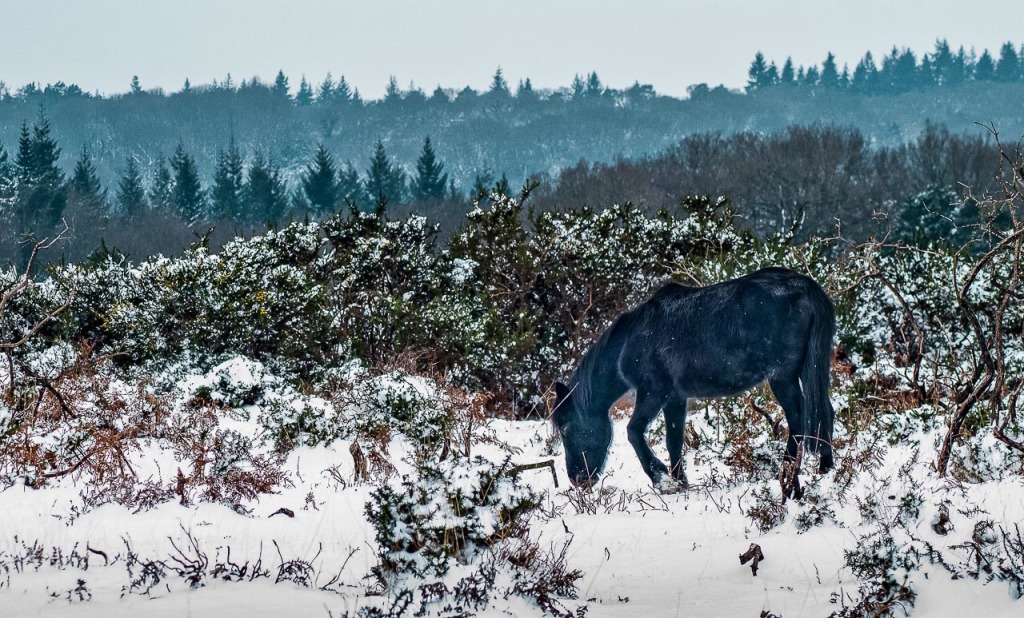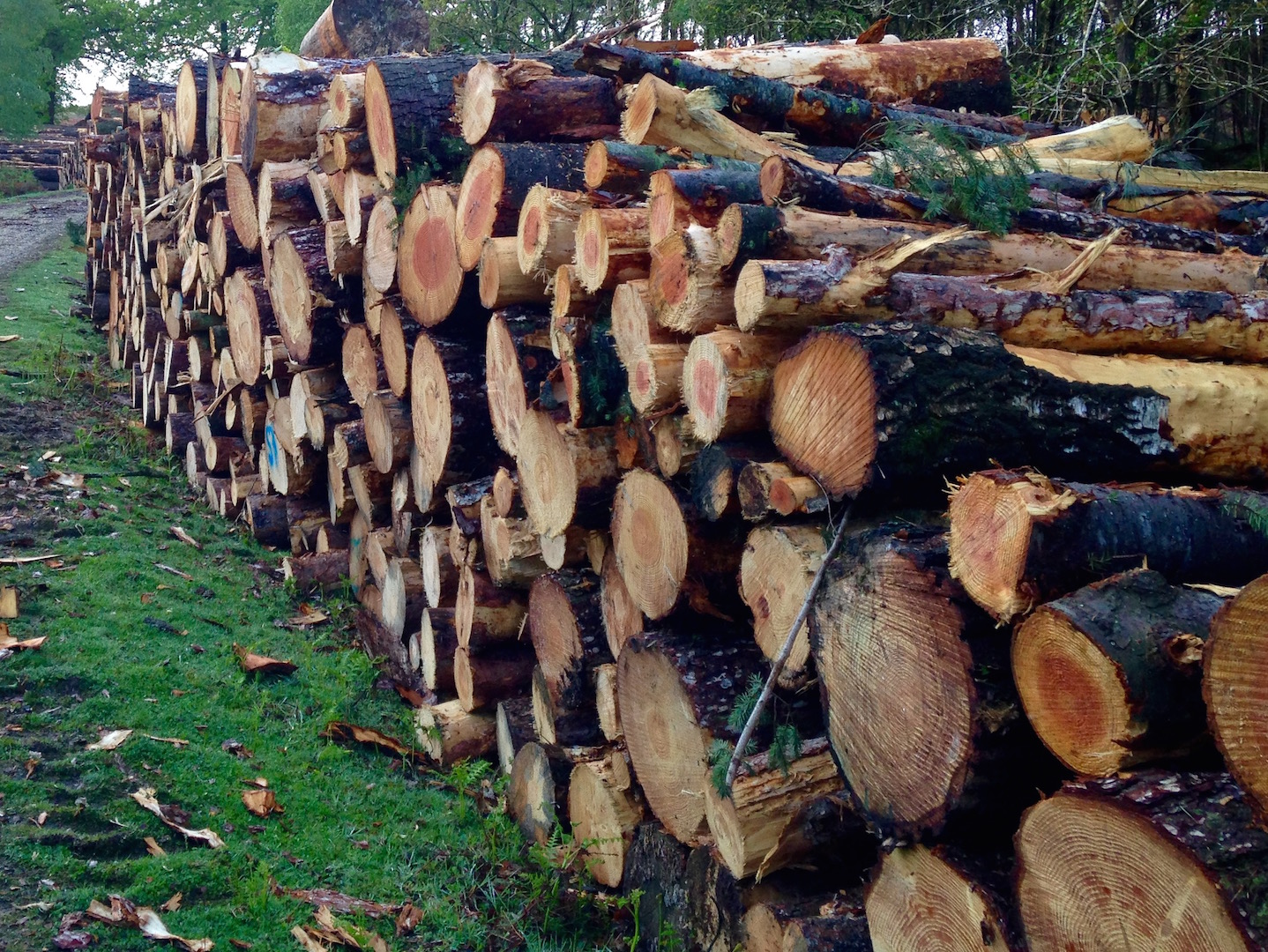Winter in the New Forest can be a magical time of year. The early morning frosts cover the landscape with a sparkling, sugar icing-like layer of white dust. As John Geddes remarked; ‘December’s wintery breath is already clouding the pond, frosting the pane, obscuring summer’s memory…’ To some, the Forest can seem a very bleak place in the deep mid-winter. But this is a landscape that enthralls no matter what the weather or time of year. My visits have been much curtailed of late. Most commoners, like me, have full-time jobs, and are not able to visit the Forest as regularly during the shorter winter days to check their stock. I am mostly limited to the weekends for exploring the territories maintained by the herds.
Ponies dressed for winter
The ‘wild’ ponies carry the early morning frost on their backs. Their shaggy winter coats trap the heat inside their bodies, which would otherwise melt the frigid layer. Their warm breath curls from their nostrils in tendrils of mist. They group together, placing their backs against the wind as their thick tails fan out behind them to provide a shield against the biting cold. In many ways it is much easier to find the free-roaming ponies during the winter months, as the foliage on the trees is much denuded and, as a consequence, they can be easier to spot. However, the piercing winds and biting cold seem able to gather pace through the skeletal woodlands and across the exposed heaths. Keeping warm during the winter is a survival skill and the commoners, like the ponies, have learnt to exploit the natural environment to fulfil their needs.
Right of Turbary
New Forest commoners are a practical people. The seasons have shaped many of their traditional customs and practices. In days past those with Right of Turbary were entitled to cut the turf for burning in their dwellings, but they were required to leave the two adjoining strips, for every strip removed, to prevent over-harvesting. In 1895 De Crespigny and Hutchinson observed that ‘the turf in the New Forest is cut in less thick and solid junks than the peat of Ireland or Scotland. It is skinned off in thin strips by an instrument specially designed. In its manner of burning, too, it differs from the peat, smouldering in a dull and uninteresting way without any quips or antics of leaping flame, or steady joy of brightly glowing incandescence.’ With the widespread availability of more efficient and less labour intensive fuels, such as gas and electricity, the Right of Turbary is no longer used for heating homes.
Right of Estovers
Some commoners had the Right of Estovers, which is the common of fuelwood or Assignment Wood. This common right is still practiced today by those who haven’t sold their rights to the Forestry Commission. The commoner is allocated one or more cords of burning wood, which must be used for fuel in the dwelling. The Forestry Commission cuts and stacks the wood, usually reasonably close to the commoner’s holding, and assigns the cordage to the rightholder who then has to collect it. This right is strictly controlled. Fallen twigs and branches can be collected by anyone living in a property built before 1850 within the perambulation of the Forest, providing a vehicle is not required to transport them.
Even the hearthstone has rights
The ancient rights of common were not assigned to an individual but to the property. If the homeowner sold the house the rights would pass to the next owner. In the case of Turbary and Estovers, upon which many commoners depended, the rights were assigned to a specific part of the house, namely the hearthstone or fireplace. If a commoner, with fuel rights, rebuilt his dwelling elsewhere on his land he was careful to preserve the old fireplace. De Crespigny and Hutchinson remarked, ‘it is for this reason that we sometimes see in the Forest a fireplace curiously situated in a cabbage bed or an orchard, with no apparent function or reason for existence. It stands there in witness of its owner’s rights of fuel.’ But as I said earlier New Forest commoners are a practical people!
Top photo by kind permission of Paul Chambers.




You must be logged in to post a comment.